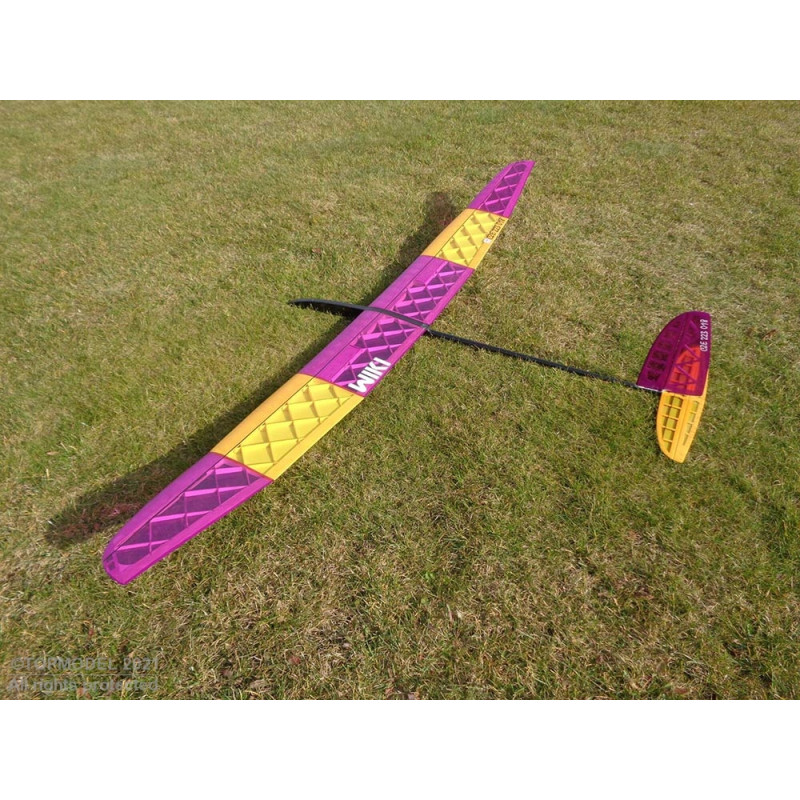- Out-of-Stock











F3-RES competition glider building kit (bungee cord start)
The model was developed in collaboration and consultation with several leading pilots and aerodynamicists.
This is without doubt the ultimate model!
WiKi draws on all the experience of four years of development, production and operation of the first model named KIWI, on the expertise of reference customers and on the knowledge of competition and leisure pilots from all over the world.
Not to be overlooked is the geodesic wing design, which ensures maximum rigidity. This contributes, among other things, to a higher launch height and neutral behavior in turbulent, highly thermal air. As a result, the model can be built lighter for the same strength/stiffness.
The fuselage has a minimal cross-section for the lowest possible frontal drag.
The optimized in-plane shape of the ear reduces induced drag. The new airfoils are inspired by the latest F5J category airfoils manufactured with FullCore technology and then modified for RES construction techniques. Emphasis was placed on increasing penetration, which led to a reduction in maximum profile thickness and camber. As a result, the airfoil produces less lift, and the airframe's weight had to be reduced. Given the now fully exploited potential of conventional construction, a unique geodesic structure design, previously unused, was decided upon. This method increases the wing's rigidity enormously. The result is a lighter airframe with greater rigidity, a thinner airfoil for high penetration and a shallower wing chord for reduced drag. Less wing lift and lower weight are required to counteract high lift after take-off. The distribution of profiles along the wing's half-span ensures maximum glide even at very low weight, and stability during spirals without the need for major control corrections.
Initial comparative tests have already shown that the new model can keep up with the Kiwi in dead air, thanks to its lower weight, despite its smaller wing area. In active air, however, it is even better and more versatile, thanks to its greater penetration.
The two separate AFs do not affect the model's handling, even at low speeds. Landing on target is therefore precise, and there's no need for "wild" depth corrections.
The spiral is stable without trying to tighten it, rudder response is immediate but adequate, and the model can fly over a wide range of attitudes and centers of gravity, making it very versatile.
The ballast box is in the wing, with a total ballast weight of 130g. Ballast assemblies (steel and hardwood) with practical plywood box and the electric fuselage version will be available as separate kits.
See also this excellent image-based building guide, here>. lpechan.rajce.idnes.cz/Stavba_Wiki_RES
 Paiement sécurisé
Paiement sécurisé
 Livraison 24/48h
Livraison 24/48h
 Paiement 3X
Paiement 3X